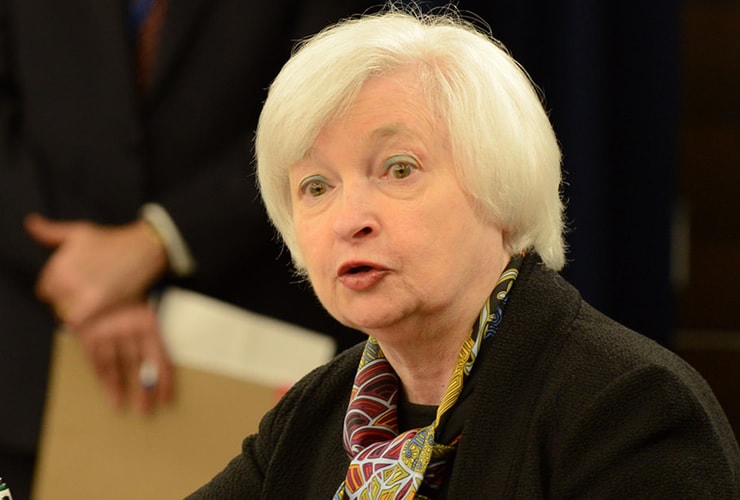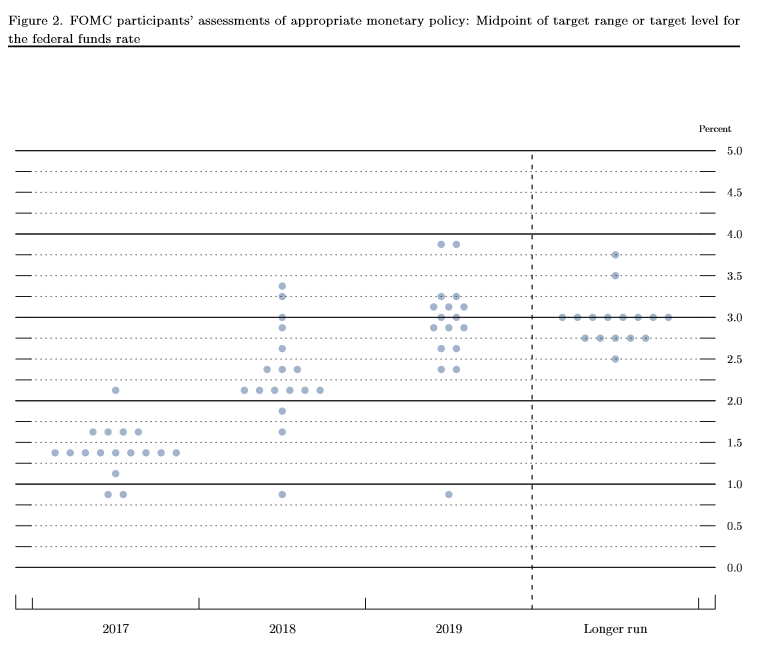US Dollar Today: FOMC Briefing to Deliver a Dovish Hike

For the US Dollar, the Federal Reserve's policy meeting is front and centre.
The Federal Reserve will raise interest rates by 0.25% at today’s meeting, but it will be a cautious, understated raise, unaccompanied by fanfare or occasion, according to most analysts.
The main reason for the lack of enthusiasm is a recent loss of upward momentum in inflation, in wages, in growth – but especially in inflation.
“Inflation, however, has been mixed and despite rising has been far from stable at Fed's 2.0% target,” said, Chief Market Analyst, Valeria Bednarik of ForexStreet, adding, that she expects the statement to ere on the ‘dovish’ – which means expecting lower rates.
Such an outcome would not be helpful to those hoping for a stronger US Dollar as it hints that future action on rates will not be as agressive enough to warrant a sustained move higher.
“Overall, and despite odds of a rate-hike being high, the market expects it to be accompanied with a dovish statement, and the central bank reaffirming its dependence on macroeconomic data,” added Bednarik.
Other analysts seem to agree about the ‘dovish hike’ hypothesis.
“Short-term inflation dynamics, have been unnervingly soft and one could argue that this should keep a data-dependent Fed side-lined until things pick-up,” added Société Générale’s (SocGen’s) Kit Juckes.
Interestingly, inflation data will be released on Wednesday morning, and could therefore, potentially add a further nuance to the debate and the commentary from Janet Yellen after the meeting.
Even a fall in inflation in the morning’s data, however, is unlikely to shift the Fed’s view given most officials have dismissed the soft-patch in recent commentary.
“Most FOMC members, however, have been quick out of the blocks to dismiss this soft patch as nothing more than a transitory phase. Still to us, this week's move looks like an opportunistic rate hike if anything, making use of the fairly benign market conditions to take another step away from the zero-lower bound. Not everyone in the FOMC may agree, so watch out for dissenters (Kashkari, possibly Brainard),” said Juckes.
The Dot Plot
The ‘Dot Plot’ is a graphic on the Federal Reserve website which illustrates each Fed President’s expectations about the future course of interest rates.
The dots on the plot are redrawn each meeting to reflect the changing view of Fed officials – assuming their view has changed.
The consensus appears to be that there is no appetite for a change in interest rate expectations, so the dots will remain where they are.
“The dots on the dot plot are unlikely to change much,” said Selena Kirkwood of advisory service ActionGroup adding, “The previous chart showed two more rate hikes in 2017, with nothing significant occurring to alter this view.”
If, however, the dot plot reflects lower expectations then the Dollar will weaken.
“The market will be also closely scrutinizing the dot plot, as if it reflects fewer hikes in the future, the Dollar will plummet. Chances of the contrary are pretty much null at the current scenario,” said SocGen’s Juckes.
Clearly the more surprising result would be for the dot plot to reflect a steeper rise in rates.
“But it will be the hawkish surprise the market needs to rush into buying the greenback. The next question is, then: could Dollar's gains be sustainable in time after the initial excitement?” Said ForexStreet’s Bednarik.

Janet Yellen and the Balance Sheet
It may well be Yellen’s post-meeting press conference which gains the most attention as a rate hike is almost 100% expected and the dot plot is not forecast to show any changes.
Analysts will be trying to decipher whether her stance is slightly dovish or slightly hawkishly aligned, but beyond that there is little extra content expected.
Then there is the issue of the Fed’s bulging balance sheet, which contains all the Bond purchases it made during its period of quantitative easing.
This seems to have become an issue this spring time when the possibility that the balance sheet might be actively reduced came up.
It is now a new theme in the monetary policy-scape and may well affect the Dollar.
If the Fed indicates it is shrinking the balance sheet by actively selling bonds the Dollar could rise, if it simply does not reinvest the principle it earns on its maturing bonds then the Dollar could rise a fraction.
If it does not do anything it may be taken as bad sign and the Dollar might fall.
“Something, however, began to change in March, as the Fed brought to the table the balance sheet. Large-scale assets purchases over the last years left it at $4.5 trillion, far beyond needed to support US reserves needs. Back then, policymakers introduced the idea of beginning shrinking the balance sheet sometime this year, becoming a new line in their usual jawboning,” said Bednarik on the subject.
Actiongroup’s Selena Kirkwood also sees the balance sheet as a potential monetary policy gauge.
Another key element that’s expected to move the U.S. dollar is any signs of when and how the Fed will start reducing the $4.5 trillion balance sheet. Selling assets on its balance sheet will provide a much stronger signal than just choosing not to reinvest the proceeds of treasuries and mortgage-backed securities.”
Despite the expected dovish tenor to the meeting, there is little chance of a downwards revision to Fed forecasts.
“There's an outside chance that the growth and inflation profile could be tinkered lower – the extent to which will be telling of just how transitory some members see the current slowdown,” noted SocGen.
Overall if the doves win out as they are expected to, the Dollar is likely to moderate a little higher, but not very much.
The surprise would be a more hawkish statement which could catapult the greenback higher as it would re-imagine a flawless run of rate hikes into the future.




